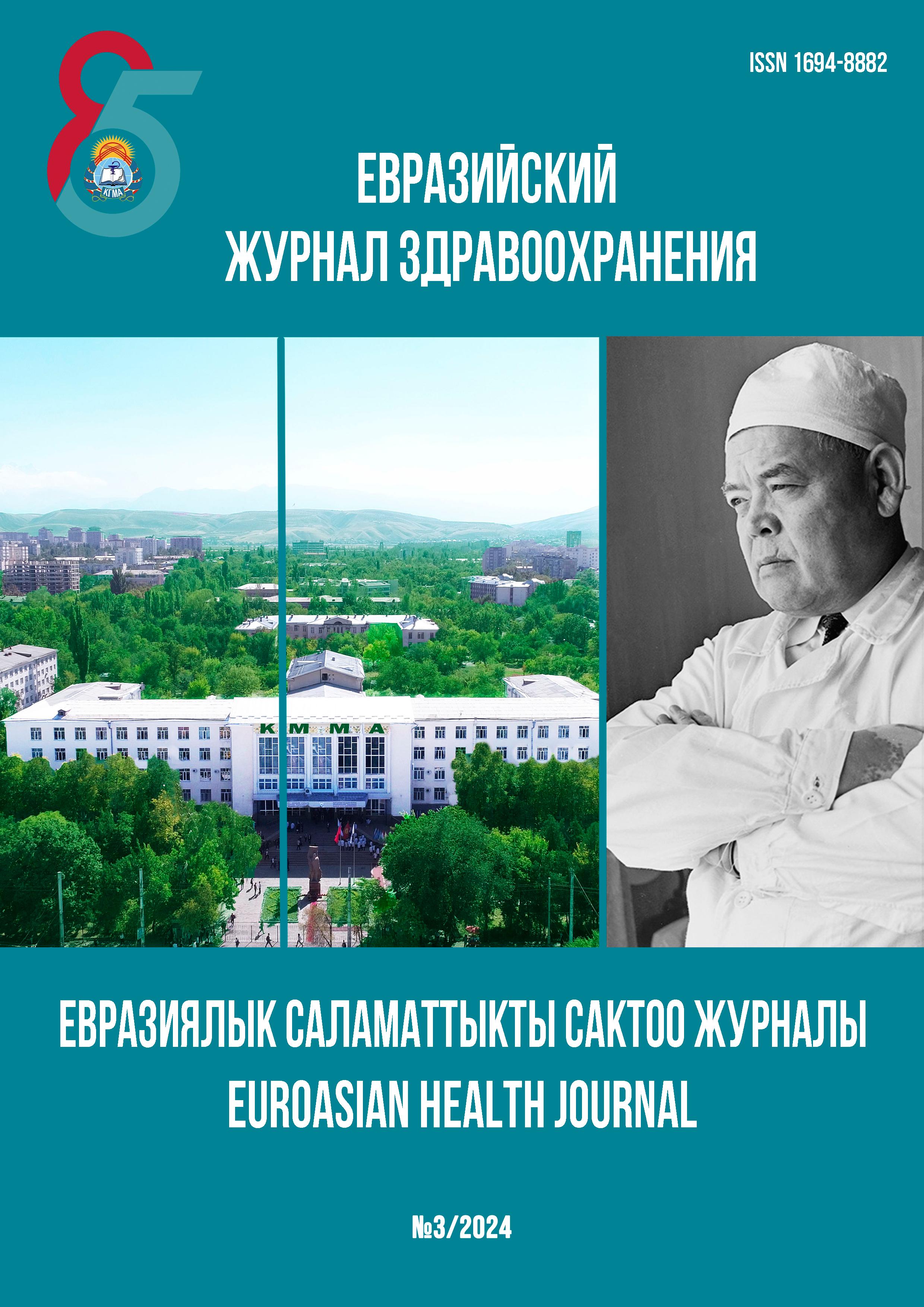PROGNOSTIC ASPECTS OF THE OUTCOMES OF INTRACRANIAL MENINGIOMAS
DOI:
https://doi.org/10.54890/1694-8882-2024-3-50Abstract
Meningiomas are stratified depending on the extent of the tumor and the degree of resection, often in isolation from other clinical variables. The aim of the work is to integrate demographic, clinical, radiological and pathological data for the development of prognostic models of meningioma outcomes.
Material and methods. Authors have developed a comprehensive database containing information on 235 patients who underwent surgery for 257 meningiomas in one facility from 2013 to 2023. The median follow-up was 4.3 years, and the resection samples were re-evaluated in accordance with modern diagnostic criteria, resulting in 128 grade II meningiomas and 25 grade III meningiomas according to WHO. A series of machine learning algorithms have been trained and configured using nested resampling to create models based on preoperative functions, conventional postoperative functions, or both.
Results. Authors compared the accuracy of different algorithms, as well as the unique information they provided in the data. Machine learning models limited to preoperative information such as patient demographics and radiological characteristics had the same accuracy in predicting local insufficiency or overall survival as models based on the degree of meningioma and the degree of resection. Integrated models, including all available demographic, clinical, radiological and pathological data, allowed us to obtain the most accurate estimates. Based on these models, authors have developed decision trees and nomograms to assess the risks of local insufficiency or overall survival in meningioma patients.
Conclusion. Clinical information has historically been underused in predicting meningioma outcomes. Prognostic models trained on the basis of preoperative clinical data work comparably with conventional models in terms of the degree of meningioma and the degree of resection. Combining all the available information can help to more accurately stratify meningioma patients.
Keywords:
meningioma, surgical treatment, resection, outcome, prognosis.References
1. Gennatas ED, Wu A, Braunstein SE, Morin O, Chen WC, Magill ST, et al. Preoperative and postoperative prediction of long-term meningioma outcomes. PLoS ONE. 2018;13(9):41-61. https://doi.org/10.1371/journal.pone.0204161
2. Мамытов М.М., Тухватшин Р.Р., Апсаматов
З. 3. М., Ырысов К.Б. Анализ величины неопластического очага ЦНС у жителей, проживающих в зоне урановых хвостохранилищ. Вестник КГМА им. И.К. Ахунбаева. 2017;1:68-71.
3. Имакеев Н.А., Ырысов К.Б., Медведев М.А. Результаты нейрохирургических методов диагностики при опухолях головного мозга супратенториальной локализации. Вестник КГМА им. И.К. Ахунбаева. 2018;4:43-48.
4. Ырысов Б.К., Арстанбеков Н.А., Ырысов К.Б. Магнитно-резонансно-томографические характеристики внутричерепных менингиом. Нейрохирургия и неврология Казахстана. 2021;2(63):47-50.
5. Крылов В.В. Варианты клинического течения опухолей головного мозга в практике неотложной нейрохирургии. Вестн. практ. неврологии 2018;4:153-158.
6. Мурзалиев A.M. Дифференциальная диагностика новообразований и сосудистых заболеваний головного мозга. Здравоохранение Кыргызстана. 2021;3-4:16-20.
7. Ырысов К.Б., Арстанбеков Н.А. Интракраниальные менингиомы: корреляции между клинической картиной, гистопатологией и генетическими маркерами. Здравоохранение Кыргызстана 2022;4:41 – 46.
8. Yrysov KB, Arstanbekov NA, Mamytov MM, Akmataliev AA, Turganbaev BJ, Vityala Y. Postoperative complications in patients with intracranial meningiomas who underwent surgery. Biomedicine. 2023;43(3):34-40.
9. Дуйшобаев А.Р., Кривошапкин А.Л., Ырысов К.Б. Хирургия внутричерепных менингиом. Ош; 2023. 171 с.
10. Huntoon K, Toland AMS, Dahiya S. Meningioma: A Review of Clinicopathological and Molecular Aspects. Front Oncol. 2020;10:579-599.
11. Johnson MD, Abu-Farsakh S. Clinicopathologic Features of Incidental Meningiomas: A Review of the Literature and the University of Rochester Autopsy Experience. Clin Neuropathol. 2019;38:118-121.
12. Ron E, Modan B, Boice JD. Tumors of the Brain and Nervous System after Radiotherapy in Childhood. N. Engl. J. Med. 2019;319:1033-1039.
13. Weber RG, Bostrom J, Wolter M, Baudis M, Collins VP, Reifenberger G. Analysis of Genomic Alterations in Benign, Atypical, and Anaplastic Meningiomas: Toward a Genetic Model of Meningioma Progression. Proc. Natl. Acad. Sci. USA. 1997;94(26):14719-14724. https://doi.org/10.1073/pnas.94.26.14719
14. Radeesri K, Lekhavat V. The Role of PreOperative MRI for Prediction of High-Grade Intracranial Meningioma: A Retrospective Study. Asian Pac J Cancer Prev. 2023;24(3):819-825. https://doi.org/10.31557/APJCP.2023.24.3.819







